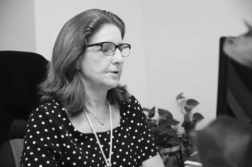ORLANDO, Fla. (Ivanhoe Newswire) – Work when you want, how you want, with whom you want—sounds great! But freelancers, consultants, part-time workers, and anyone in the gig economy all fall under the category of nontraditional jobs. Due to not having employee benefits and “feast or famine” income streams, many have a hard time saving for the future. A Betterment survey shared that one in three gig workers have no retirement savings, and according to the Freelancers Union and Upwork, 30 percent of them are baby boomers. If you’re nontraditional, we’ll share the long-term downsides and what you could potentially do to save yourself.
Artists, waitresses, and ridesharing drivers are nontraditional jobs that promote freedom and flexibility, but their downsides can cost you. A recent study from the Center for Retirement Research shows that three out of four U.S. workers ages 50 to 62 did not have an employer-provided retirement plan or health insurance, which will result in them having 26 percent less in their retirement income. “A company could be paying 100 percent of your health benefits, and that could be anywhere from 600 to 700 dollars a month,” said Stefanie Nicholson, a Career Coach of Employer Relations.
If you’re nontraditional, you’re accountable for paying 100 percent of your social security and Medicare taxes through self-employment tax, while employers pay a portion of those. You’ll also have no way to automatically contribute to a retirement account and won’t have an employer’s match. Most experts agree that you will need to make two to two and a half times your former full-time salary to cover insurance, work expenses, savings, vacation and sick days.
A few other things to think about before jumping into the gig economy—cash flow is inconsistent. Not everyone will pay you on time. You will need three to six months’ worth of expenses, including rent, in savings to be safe. And if you need more money, you will need to find more work. The buck stops and starts with you.
Sources:
https://www.nytimes.com/2020/04/09/business/retirement-jobs-no-benefits.html?searchResultPosition=1
https://www.fastcompany.com/90243884/the-freelance-retirement-crisis-no-one-is-talking-about
https://www.nytimes.com/2019/09/12/business/retiring-freelancing.html
https://contently.net/2019/10/17/resources/money/retirement/guide-freelancers-saving-retirement/
https://www.refinery29.com/en-us/saving-for-retirement-freelancer-self-employed#slide-1
https://www.bankrate.com/retirement/calculators/traditional-ira-plan-calculator/
https://www.hermoney.com/earn/side-hustles/a-freelancers-guide-to-saving-for-retirement/
Contributor(s) to this news report include: Addlyn Teague, Producer; Bob Walko, Videographer and Editor.
To receive a free weekly email on Smart Living from Ivanhoe, sign up at: http://www.ivanhoe.com/ftk



